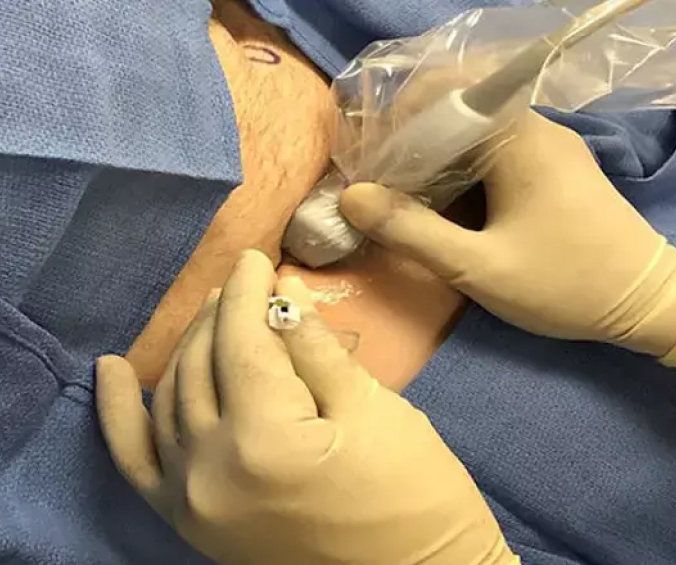
Ultrasound Guided Regional Anesthesia

Peripheral nerve blocks
Peripheral nerve blocks are a technique used to manage pain by administering a local anesthetic near specific nerves outside the central nervous system. By targeting these peripheral nerves, the procedure provides focused pain relief in a particular area of the body, such as a limb or region undergoing surgery. This approach not only alleviates pain effectively but also helps reduce the reliance on systemic pain medications and can offer prolonged pain control, improving overall patient comfort and recovery.
Fascial plane blocks
Fascial plane blocks involve injecting a local anesthetic into defined fascial planes—connective tissue layers that envelop nerves and muscles. This approach delivers effective pain relief across a wider area by numbing the nerves within these tissue layers. It is particularly beneficial for managing pain during surgeries or chronic conditions, offering substantial relief while reducing the need for systemic medications and facilitating a more comfortable recovery.


Paravertebral injections and caudal epidural
Paravertebral injections and caudal epidurals are regional anesthesia techniques used to manage pain in specific areas of the body.
Paravertebral Injections: This method involves injecting a local anesthetic or steroid near the spinal nerves at the level of the vertebrae. By targeting the nerves that exit the spinal column, paravertebral injections can provide effective pain relief for conditions affecting the chest, abdomen, or back.
Caudal Epidural Injections: This technique involves delivering medication into the caudal epidural space at the base of the spine. It targets the nerve roots and can offer relief from lower back pain, leg pain, or conditions affecting the lower part of the body.
Both approaches aim to reduce pain and inflammation, improving patient comfort and function while minimizing the need for systemic pain medications.
Book an Appointment
Please call us to ensure

